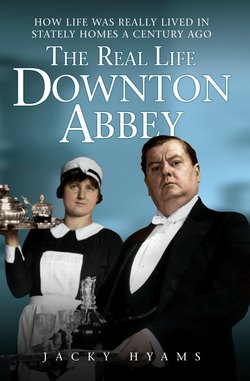Читать книгу The Real Life Downton Abbey - Jacky Hyams - Страница 11
На сайте Литреса книга снята с продажи.
THE SERVANT CLASS SYSTEM
ОглавлениеThis incredible class divide where everyone ‘knows their place’ and has a firmly set series of tasks to perform day-in, day-out, is not just a division between the two groups, master and live-in servant. For such is the long-established country house servant tradition – in Tudor times a noble with a vast country estate might have hundreds of staff working for him – that even in the early 1900s, when the British class system is already beginning to buckle, there is frequently a hierarchy amongst domestic staff, two separate servant classes living under one roof. Three very distinct groups of people all labouring and living under the same roof in the big country house or within its vast surrounds.
First in the pecking order are the upper servants, an experienced group of well-drilled slightly older professionals with specific areas of responsibility and direct, if usually formal, access to their employers. (In some instances they will have to make an appointment to talk to their master or mistresses.)
Then, way beneath them in status – even applying to the areas of the house they sleep in – is the second tier, the lower servants, frequently younger, ‘invisible’ workers, some of whom virtually work as servants for the upper group.
The harsh and rigid line dividing the two servant classes may only be crossed by the lowers in one way: hard work – strict adherence to all the restrictive rules and regulations governing a life in service and complete, unstinting deference to both their masters and the upper servants, from whom the lowers learn the ropes. Careful behaviour and steady, if gruelling, toil for years can eventually mean a move up to the higher servant ranks. Promotion. Of a sort. Because while the upper-class of servants live more comfortably, often with their own live-in quarters, earn more (but not much more) and have far greater access to their employers’ private lives – and their darkest secrets – theirs is still a working life of rigid formality, unstinting routine and furious bursts of planned activity when large groups of rich and famous guests are due to be entertained or the family go travelling – and very little else.
OK, it represents a steady job for life for many, at a time when the majority of the population are living in less than luxury (and the upper echelon of servants can sometimes be just as snobbish about their position in life as their masters). But this is definitely not anything like a working life as we might recognise it.
